| When I first attempted wildlife photography, I knew about birds and other animals - what they looked like, etc., but had little success in photographing them because I didn't learn any field craft or research the behaviour and habitat of what I was photographing. Doing your homework makes a big difference not to mention, enjoyable. Many people will argue whether you need to wear camouflage clothing when watching or photographing wildlife. Personally, I don’t think camouflage clothing is there to ‘hide’ you but to ‘disguise what you are’. In the wild, most animals see humans as predators and will avoid us. They identify us as by our shape, smell, movement and the sounds we make. Camouflage will help disguise the human unique biped shape by breaking it up, however, this will work better with mammals than birds who have a much better eyesight generally. Other ways to break up your shape is to cover your face (which stands out) and keep a low profile. When it comes to stalking, birds are difficult to do so with and it is best let them come to you. Their eyesight is usually very good, especially birds of prey and are particularly sensitive to movement. Most don’t have a sense of smell with hearing usually good. In winter time, birds are far less cautious and have Robins eat out of my hand! |
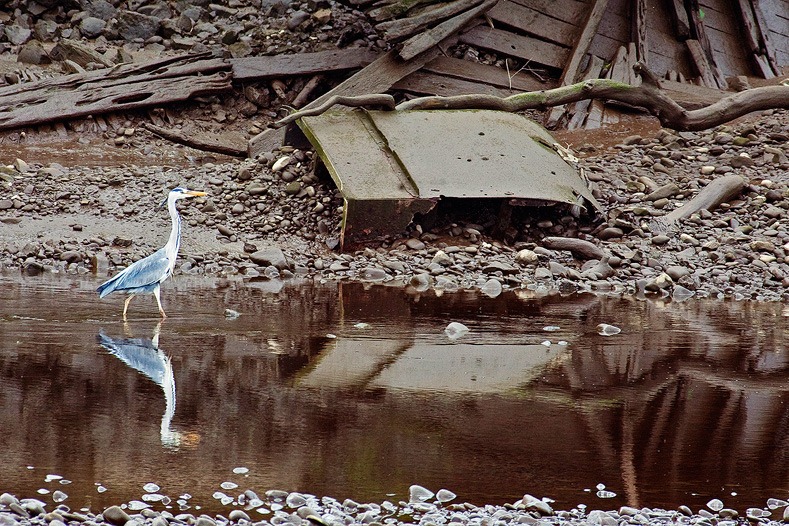 A Heron feeling unworried within its ‘comfort zone’. Taken with a 400mm |
| Mammals are different. For example, Roe Deer a (separate section here) have a very good sense of smell and hearing though their eyesight is limited with monochromic vision – they only see in shades of black and white. They can, however, detect light reflection from an unnatural material so it’s that rather than colour, that Roe Deer are alerted to. they also have the ability to detect the slightest physical movement and can spot a moving human form at considerable distances. |
 Sitting quietly will sometimes let animals come to you. Taken with a 400mm lens |
Signs and TracksMany people when taking a walk in the country, particularly in a wood, will not really look around them. When walking, look around at your feet and see what you can find. It can give you a good idea as to what is around – tracks, droppings, pellets, remains of kills. Winter and summer give different opportunities. In winter you can find tracks everywhere. Summer shows routes and paths made in the undergrowth by larger animals which will tend to use the same paths. |
Rabbits |
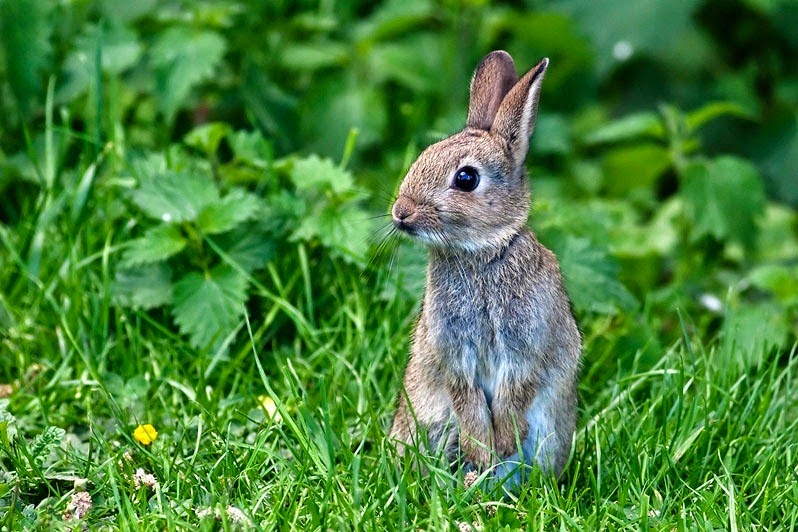 A young Rabbit much easier to approach (and more photogenic) Taken with a 400mm lens |
| Rabbits, understandably, are usually nervous and timid animals – not surprising considering they are low on the food chain with Stoats, Weasels, Foxes and Buzzards all making a meal out of them. They tend to be most active at dawn and dusk when they are feeding but can wonder out of their burrows during the day as well. I’ve never managed to ‘stalk’ one, rather just sit quietly by a burrow at their most active time and let them come to me which, once seeing I’m no threat, they seem happy to do so as long as no sudden moves are made. If alarmed, they will stamp their feet to warn other Rabbits. |
| Typical prints show the rear larger foot pads at the front and its smaller front feet at the back as it puts these down first before bringing its larger feet forward. Droppings easy to find winter or summer, sometimes in piles sometimes just a few together. |
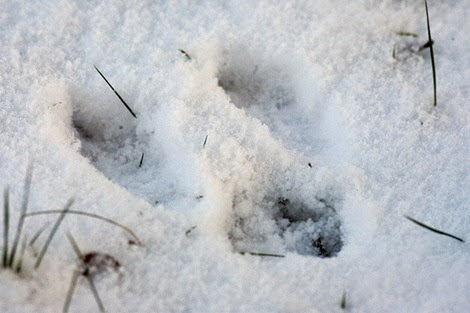 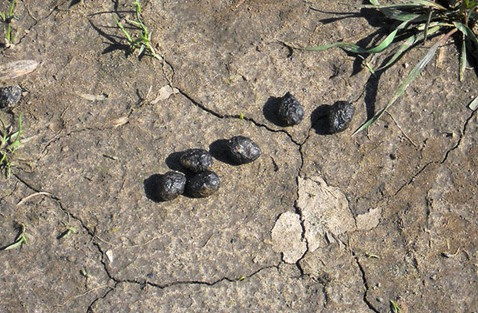 |
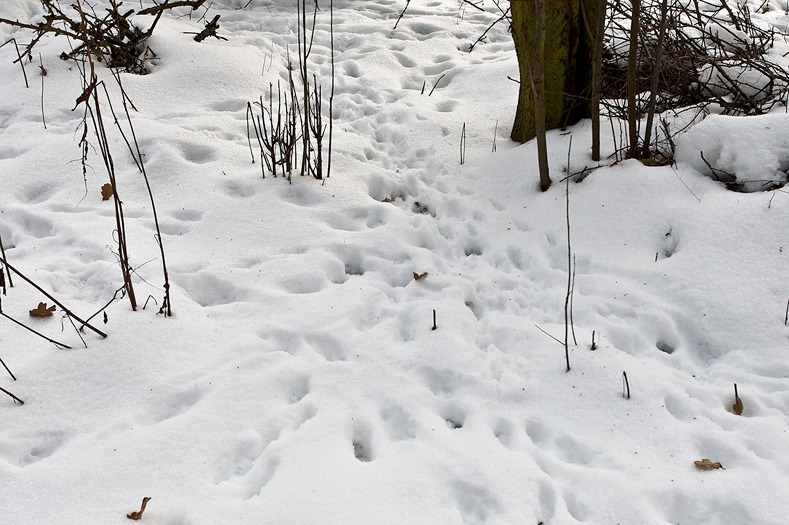 |
Foxes |
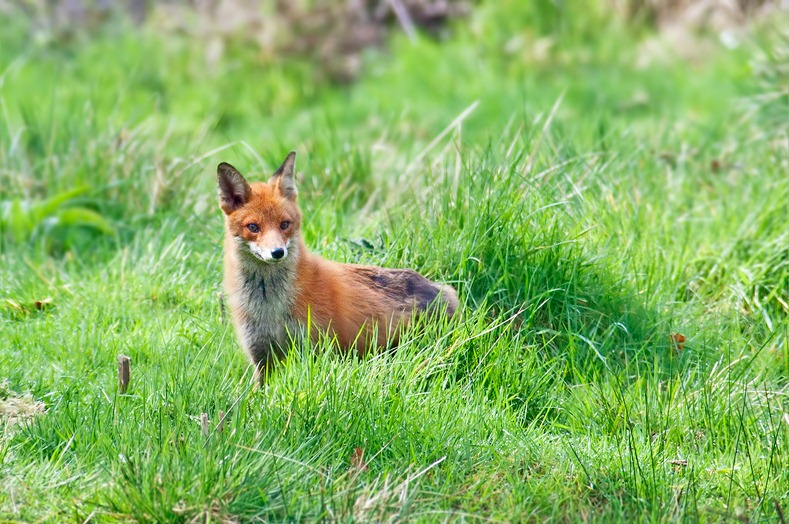 Taken with a 400mm lens plus 1.4 converter |
| Foxes are a bit similar to Roe Deer, so you can quietly approach them downwind – it you’re lucky enough to see one first, though normally letting them come to you is your best bet. Personally I find them difficult to photograph because they are smaller and so more likely to be hidden unless out in the open. I also found when photographing both these animals a single click of the cameras shutter can stop them in their tracks and get their attention giving you the chance to take a photo as they remain motionless, staring at you. Useful if you are shooting in low light with a slow shutter speed. This one stopped and looked around after hearing my shutter. Listen out for other animal calls, especially Magpies. Many birds will ‘mob’ predators and can often be the first indication that there is a Fox around. I found this Fox below because two Magpies were very focal towards this young Fox, diving at it at perching nearby making their typical alert sounds. |
| Foxes tend to use the same paths, often those made by humans or other animals such as Deer. Both sets of prints bottom left and right are two sets, on the left image the prints are clearer being in shallower snow. 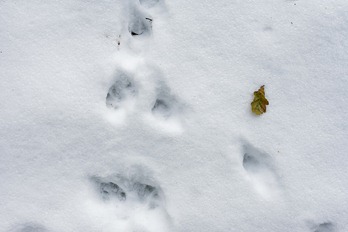  A clear, warn path through the undergrowth used by a Fox, probably on a daily (nightly) basis. | 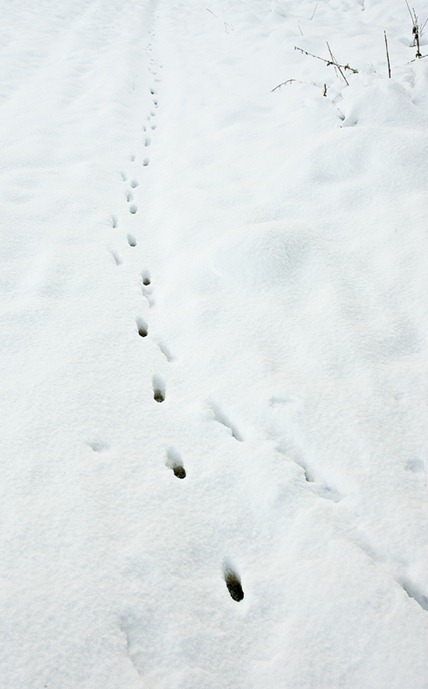 |
 |  |
| Above left another clear path, this time underneath a wire fence and then alongside the edge of a farmers field. Fox scat above right with a large amount of fur in it, presumably from a diet of rodents and rabbits. |
Small Birds |
 Robin taken with a 300mm lens |
| I’m not going to go into much detail about the various smaller birds as they are common enough to see for the most part. If you want to get close up, especially to photograph them, then the best options are to use food, catch them when they are otherwise pre occupied or use some kind of a hide. Most birds will not allow you to approach them, even a bird used to people, if you head straight for them, making eye contact, will be wary. I’ve found the best thing is let them come to you. Sitting quietly somewhere where they gather, usually through feeding, and just remain still and they will eventually except you. The Robin above came to me because I was eating something and actually ate out of my hand. Had it been later on in the year and not Winter when food was in short supply, it probably wouldn’t have. Below a group of Starlings were feeding on insects amongst some seaweed on a beach. I sat down nearby and they moved along towards me as they fed and in some cases ended up too close for me to focus on them. This works well for waders too. Sit up on the beach where there are some, and as long as the tide is coming in, they will feed at the tidal edge and move closer to you as the tide moves in. |
 Taken with a 500mm lens |
Other |
| Below left is an Owls pellet, probably from a Tawny Owl. Inside it showed the indigestible part of its recent meal which was a Vole. Below right is a pellet from a Kestrel. By chance I was photographing it when it regurgitated it. On close inspection it showed that the Kestrel had been feeding on Beatles. |
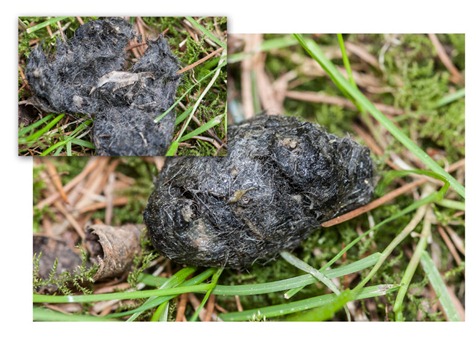 |  |
 Leftover pine cones from a Squirrel |
| Perhaps amazingly, I have on more than one occasion come across a Sparrowhawk that has just made a kill. Normally they will fly off, but on one occasion it stubbornly stayed with its kill and with a classically bird of prey behaviour, covered its meal with its wings (hiding the evidence from other predators). It continued to stay to eat the Pigeon eventually flying off with it about 15 minutes later. |
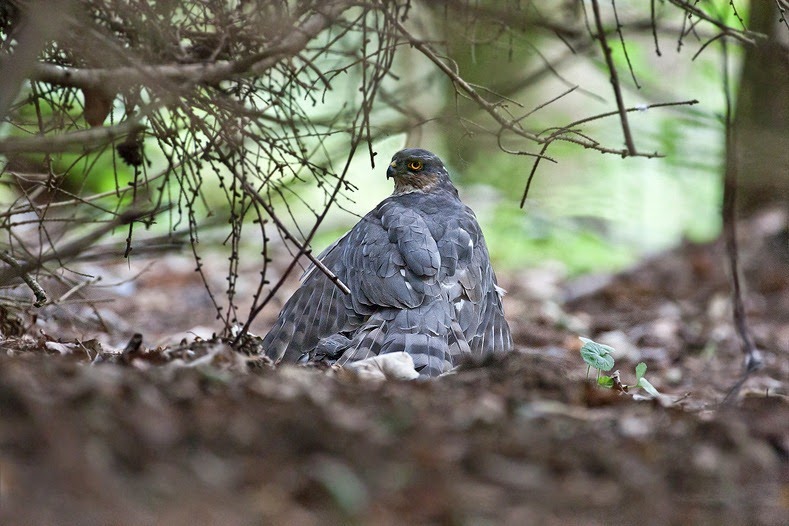 |
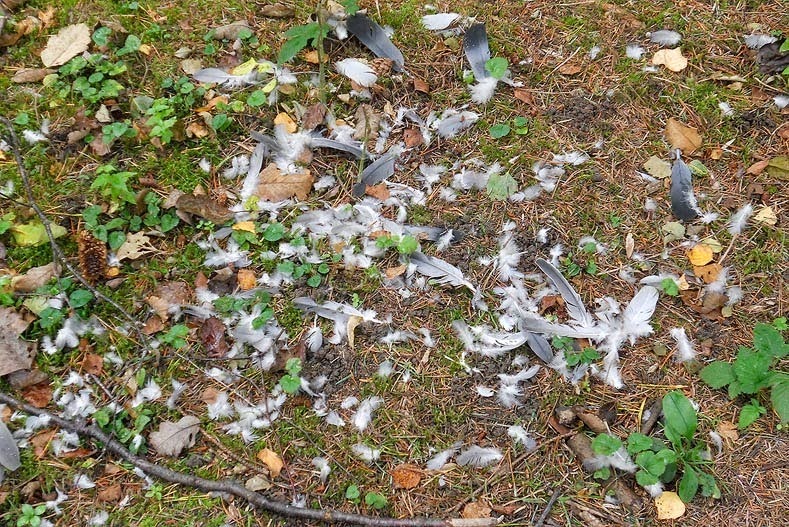 Usually all that’s left as evidence of a Sparrowhawk kill |
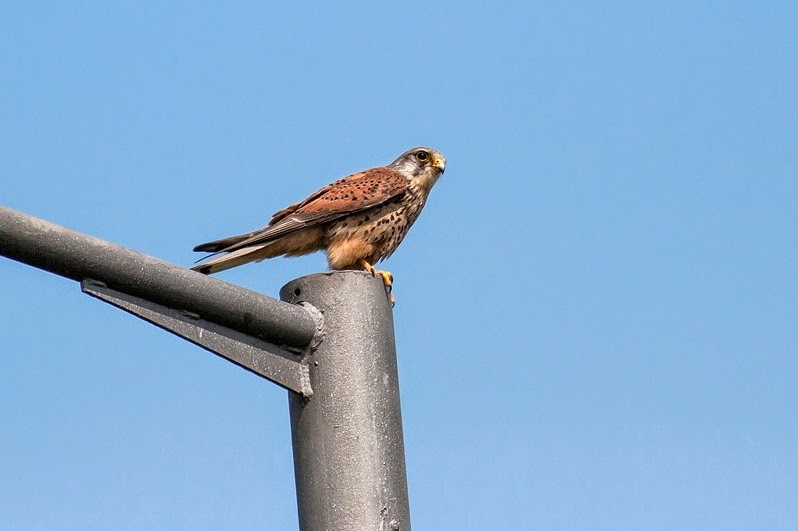 Birds of prey are notorious for trying to approach due to their acute eyesight. This one was along a main road, so more relaxed |
A little about Photographic EtiquetteThere’s a seemingly growing number of photographers, who's only interest is to get a picture and have little interest in the welfare of the wildlife or anybody else around them. It’s something that puts me off using public hides where they seem to collect. I always try to make sure that nothing I do causes harm to the wildlife or environment and have probably missed a number of good photographic opportunities as a result. |





0 comments:
Post a Comment